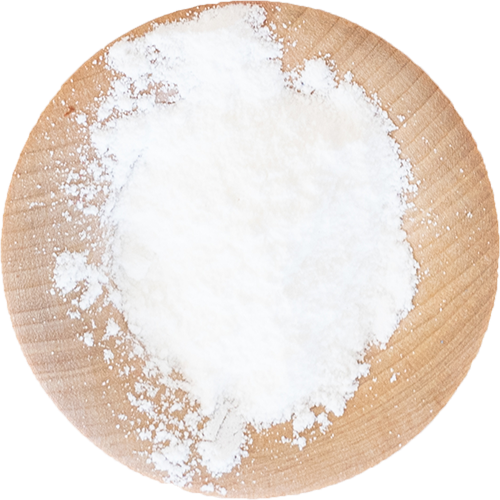Calcium Citrate Malate
Fully-Reacted Chelated Mineral
Calcium citrate malate, a chelated form of calcium, is widely used in supplements due to its high absorption rate and bioavailability. Binding calcium with citrate and malate makes it easier for the body to dissolve and digest the calcium. 1
The calcium citrate malate produced by Cypress Systems is fully chelated, which increases its bioavailability in the body. Fully reacted, chelated minerals remain covalently bonded and can be properly absorbed and used by the body. Additionally, they do not disassociate in the stomach’s acidic environment. ‡
Fully reacted mineral ingredients, such as our calcium citrate malate are up to four times more bioavailable, with less inhibition by other minerals, and have fewer potential side effects. ‡
Calcium Citrate Malate Research Data‡
Research on calcium citrate malate supports potential positive health outcomes: 1, 5, 6, 7, 8 ‡
Research reiterates the benefits of calcium citrate malate for people at all life stages, ranging from children through to postmenopausal women and seniors. With studies showing how calcium citrate malate provides support for bone health and mass and slowing bone loss associated with aging. ‡
Studies reinforce the bioavailability and ease of absorption of calcium citrate malate, making it a recommended ingredient for supplements and food fortification.
For postmenopausal women, calcium citrate malate is shown to have potential benefits for bone health and density. ‡
Studies show that for children, a group commonly at risk for low calcium levels, there are positive benefits for bone mineral density when supplementing with calcium citrate malate. ‡
Research has shown, and is ongoing on the potential positive health outcomes of calcium citrate malate in relation to joint, dental, immune system, and kidney health. ‡
The recommended daily allowance (RDA) of calcium:
Males and females aged 19 – 50: 1,000 mg
Females aged 51+ : 1,200 mg
Males aged 71+: 1,200 mg
Applications for Calcium Citrate Malate

Supplement
Capsules

Nutritional
Gummies

Nutritional
Tablets

Functional
Foods &
Beverage
Benefits of Calcium Citrate Malate‡
The potential benefits of calcium citrate malate may include: 1, 2, 5, 6, 7, 8 ‡
Providing bone health, mass, strength, and function support. ‡
Supporting healthy bone function in women, particularly postmenopausal women. ‡
Supports nerve, hormone, and tissue function. ‡
Potential benefits to gastrointestinal health. ‡
Unlike other forms of supplemental calcium, it may not contribute to the development of kidney stones.
Increased absorption rates when compared to other forms of calcium
Request Product Information
‡These statements have not been evaluated by the Food and Drug Administration. These products are not intended to diagnose, treat, cure or prevent any disease.
1 Clinical Applications and Properties of Calcium Citrate Malate (Accessed August 4, 2023) https://globalresearchonline.net/journalcontents/v69-1/09.pdf
2 Calcium: Fact Sheet for Health Professionals (Accessed August 4, 2023) https://ods.od.nih.gov/factsheets/Calcium-HealthProfessional/
3 Calcium: Fact Sheet for Consumers (Accessed August 4, 2023) https://ods.od.nih.gov/factsheets/Calcium-Consumer/
4 Comparison of Common Calcium Supplements: American Family Physician (Accessed August 4, 2023) https://www.aafp.org/pubs/afp/issues/2000/1015/p1895.html
5 Reinwald S, Weaver CM, Kester JJ. The health benefits of calcium citrate malate: a review of the supporting science. Adv Food Nutr Res. 2008;54:219-346. doi: 10.1016/S1043-4526(07)00006-X. PMID: 18291308. (Accessed August 4, 2023) https://pubmed.ncbi.nlm.nih.gov/18291308/
6 Smith, K.T., Heaney, R.P., Flora, L. et al. Calcium absorption from a new calcium delivery system (CCM). Calcif Tissue Int 41, 351–352 (1987). (Accessed August 4, 2023) https://doi.org/10.1007/BF02556676
7 A Controlled Trial of the Effect of Calcium Supplementation on Bone Density in Postmenopausal Women: New England Journal of Medicine (Accessed August 4, 2023) https://www.nejm.org/doi/full/10.1056/NEJM199009273231305
8 Calcium Supplementation and Increases in Bone Mineral Density in Children: New England Journal of Medicine (Accessed August 4, 2023) https://www.nejm.org/doi/full/10.1056/NEJM199207093270204
